
In May 2022, I wrote a note on what I called the ‘AFRINIC service region IPv4 conundrum‘. It discusses how AFRINIC has been managing its remaining IPv4 and the effects of its Soft Landing Policy.
This post will analyse the distribution of IPv4 during Soft Landing Phase 2 based on indicators from unique prefix statistics from 2019 to 2022. It covers how it ended in Phase 1 and is ongoing in Phase 2.
The depletion of the pool of available IPv4 raises the question — have we succeeded in guaranteeing IPv4 for those who need to maintain IPv4 networks while deploying IPv6 networks?
Remember that AFRINIC entered Soft Landing Phase 1 on 31 March 2017 and Phase 2 on 13 January 2020. In Phase 2, the minimum for both allocation and assignment is a /24 and the maximum is a /22. There is no limit on the number of requests a member can make and the allocation/assignment period is now eight months (instead of 12 ).
Figure 1 shows the total unique IPv4 prefixes per year during this period.
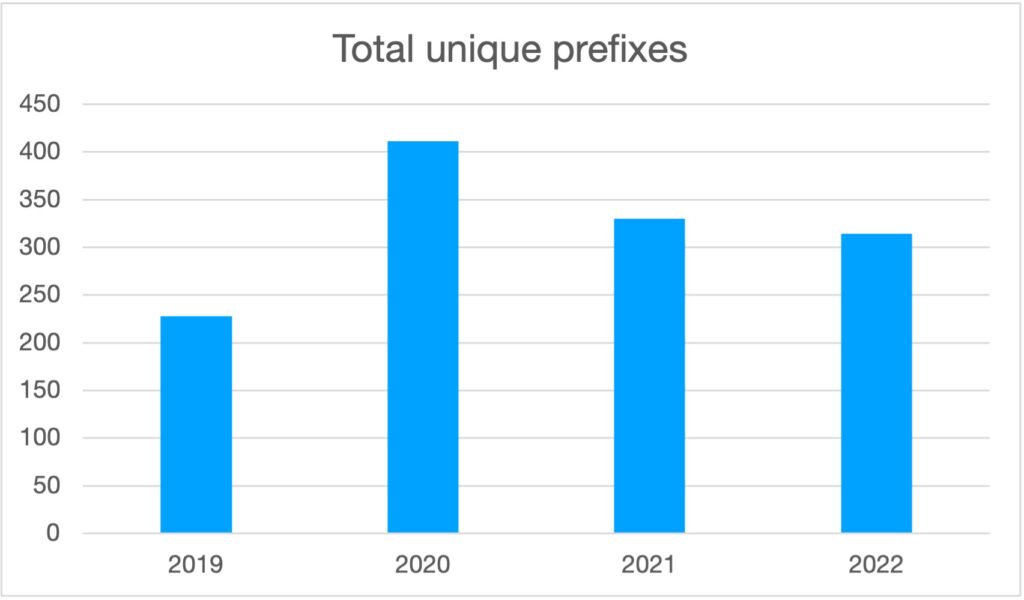
As shown in Figure 1, 2020 shows a higher rate of total unique prefixes. 177 unique prefixes forming a total of 501,760 /32 IPv4 addresses were allocated to an existing member on 28 February 2020. Allocations like these tend to be from approved requests in Phase 1.
The first indicator of this is ‘new member’ vs ‘old member’ (Figure 2). A new member means an organization without any other prior resources from AFRINIC before an IPv4 prefix was allocated/assigned.
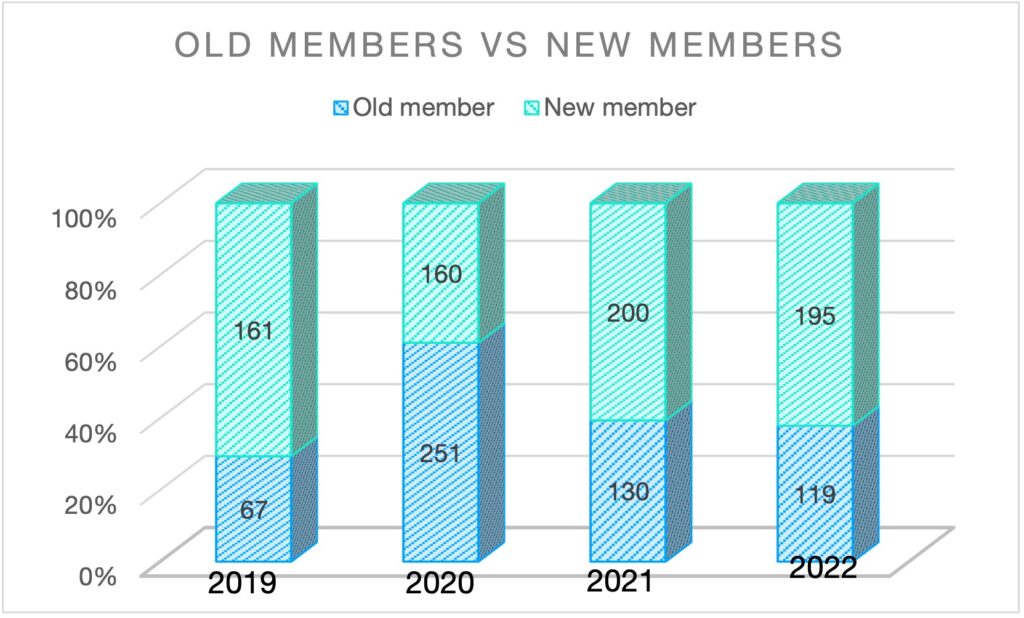
If we take out the allocations to the old members mentioned above in 2020, there was more distribution to new members.
The next indicator is ‘allocations’ vs ‘assignments’ (Figure 3) with IPv4 to Local Internet Registries (LIRs) surpassing IPv4 to end-users. The number of assignments remains steady over the period, with an average of 58.
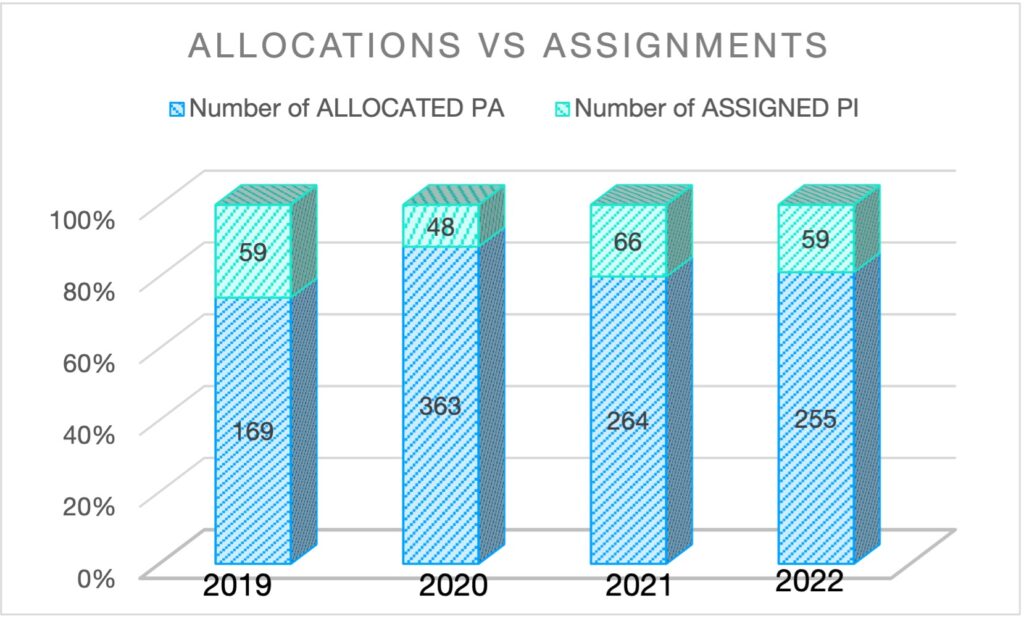
The third indicator is the distribution per economy. Combining distribution for the last two years (2021 and 2022), a count of economies with at least one allocation / assignment in 2021 or 2022 and the number of prefixes per represented economy shows the following:
- From the 56 economies served by AFRINIC, only six did not record an IPv4 prefix from AFRINIC. These economies are CF, KM, GA, ER, YT, and ST.
- Economies like SS, SO, and LY, among others, show active participation.
- In terms of number of prefixes per economy, ZA is far ahead. The Top 10 are ZA, KE, NG, AO, TZ, UG, GH, EG, LY, and CM. Five of these economies appear on the list of the Top 10 in terms of total IPv4 address space, which are ZA, EG, MU, MA, SC, TN, KE, DZ, NG, and GH.
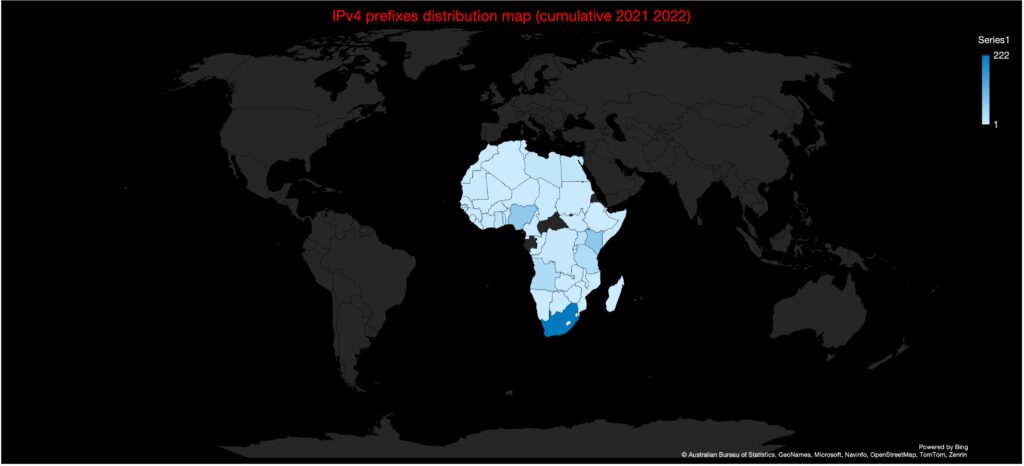
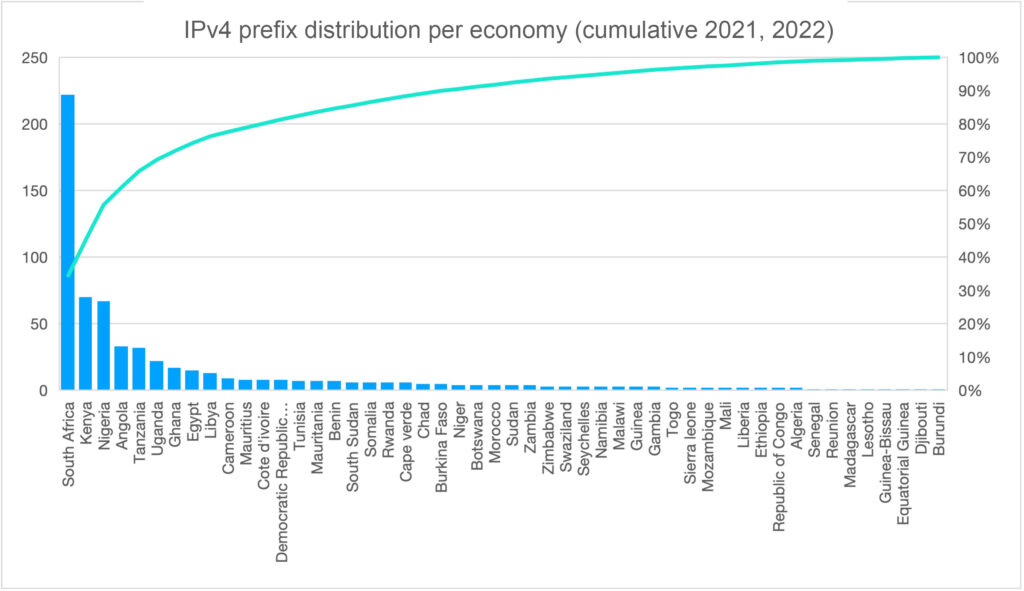
The fourth indicator is using the routing status of the prefixes (full or partial) to assess their utilization. At the end of July 2023, very few of the prefixes were ‘not routed’. Allocations are still needs-based and subsequent requests require demonstrating that 90% of previous allocations are in use.
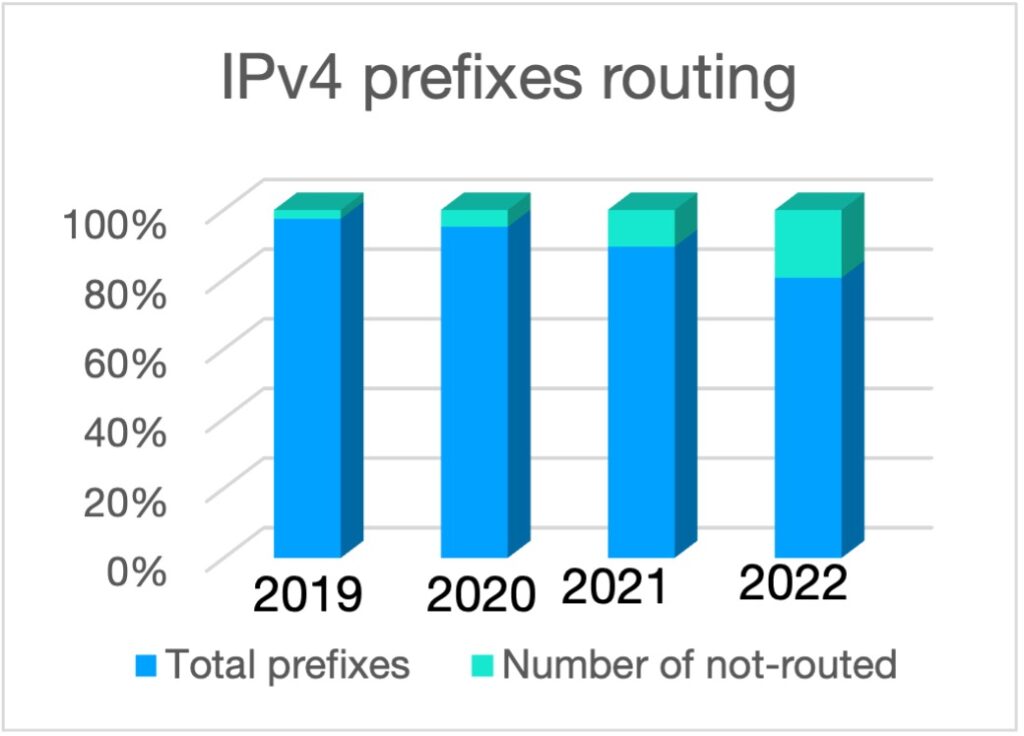
A new type of membership
With the change to the minimum allocation size from a /22 to a /24 in Phase 2, two new categories of LIRs exist:
- Micro: ‘ /24’ – <‘/23’ [256 – 511 IPs]
- Mini: ‘ /23 ‘ – <‘/22’ [512 – 1023 IPs]
By the end of July 2023, 88 micro LIRs and 67 mini LIRs were recorded. It is probable that the reduction of the allocation period to eight months justifies the size of these new requests. Otherwise, before Soft Landing Phase 2, these organizations wouldn’t have qualified for allocations from AFRINIC. As downstream providers, they should have received sub-allocations or assignments from upstreams.
According to section 5.5.1.5 of the AFRINIC policy manual, the minimum sub-allocation size is a /24. As a consequence, some of these LIRs would not qualify to make sub-allocations. Is it desirable to allow micro or mini LIRs to make sub-allocations?
Services are active
IPv4 registration services at AFRINIC are active, and the membership is still growing with a majority of LIRs from all over the region, including economies with a large number of IPv4 addresses. It would have been good to discuss these indicators at an AFRINIC meeting and decide the way forward policy-wise.
At the time of writing, the AFRINIC Statistics Portal indicates: “We now have 1,264,128 available /32 left to hit total exhaustion.”
Adeola Alain P. Aina is very active in technical networking activities in AFRICA. He worked to launch the first full IP services in the Togolese Republic in 1996 and helped many entities to come online in West Africa and on the continent in general.
Adapted from the original post at Digital Intelligence Africa.
The views expressed by the authors of this blog are their own and do not necessarily reflect the views of APNIC. Please note a Code of Conduct applies to this blog.
